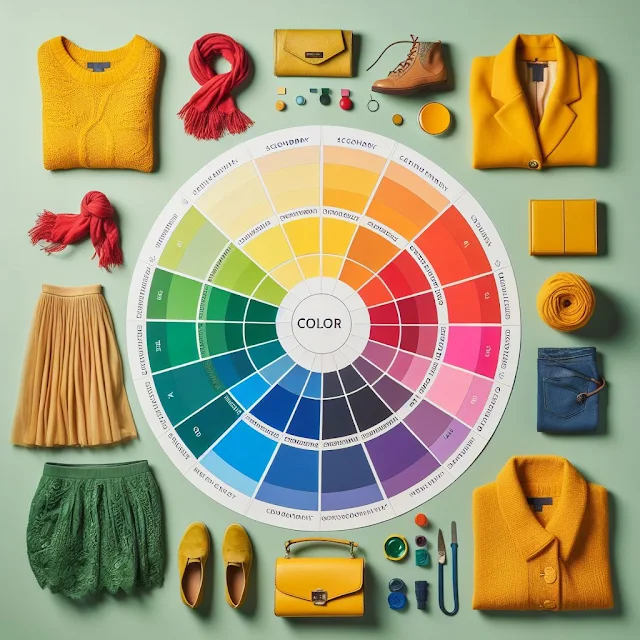Building a cohesive and stylish wardrobe isn’t just about following trends—it’s about understanding how colors work together. Color theory, a fundamental concept in art and design, can help you create outfits that are visually balanced and express your personality. Here’s a step-by-step guide to applying color theory to your wardrobe.
1. Start with the Color Wheel
The color wheel is the foundation of color theory. It consists of:
- Primary colors: Red, blue, and yellow.
- Secondary colors: Created by mixing primaries (e.g., green, orange, purple).
- Tertiary colors: Blends of primary and secondary hues (e.g., teal, magenta).
Use the wheel to identify harmonious combinations:
- Complementary colors: Opposite on the wheel (e.g., red and green). These create bold contrasts, ideal for statement pieces[3].
- Analogous colors: Neighbors on the wheel (e.g., blue, teal, and green). These offer subtle, cohesive looks.
- Monochromatic schemes: Variations of one color (e.g., light blue, navy, and cobalt). Perfect for minimalist styles.
2. Consider Your Skin Undertones
Colors interact with your skin’s undertones (warm, cool, or neutral).
- Warm undertones (yellow/peachy): Earthy shades like olive, terracotta, and mustard work well.
- Cool undertones (pink/red): Jewel tones like emerald, sapphire, and ruby are flattering.
- Neutral undertones: Most colors suit you, but soft pastels and muted hues often shine.
Test this by holding fabric swatches near your face in natural light.
3. Balance Bold and Neutral Colors
A balanced wardrobe includes:
- Neutrals: Black, white, gray, beige, and navy. These anchor outfits and pair easily with brighter shades.
- Accent colors: Use complementary or analogous hues to add vibrancy. For example, pair a neutral beige blazer with a cobalt blue scarf.
Avoid overwhelming your look—limit bold colors to 1–2 pieces per outfit.
4. Factor in Season and Occasion
- Spring/Summer: Light, airy colors like pastels (e.g., lavender, mint) or warm tones (coral, sunflower yellow).
- Fall/Winter: Deep, rich shades like burgundy, forest green, or charcoal gray.
- Formal events: Stick to neutrals or classic combinations (e.g., black and gold).
- Casual outings: Experiment with playful contrasts, like mustard yellow paired with navy[8].
5. Practical Tips for Wardrobe Building
- Use the 60-30-10 rule: 60% neutrals, 30% base colors, 10% accents.
- Test versatility: Ask, “Does this color pair with at least three items I own?”
- Adjust saturation: Soft, muted tones (e.g., dusty pink) are easier to mix than neon shades.
Final Thoughts
Color theory empowers you to make intentional choices, whether you’re curating a capsule wardrobe or adding seasonal updates. By understanding harmony, contrast, and personal suitability, you’ll create outfits that feel both polished and uniquely you.

